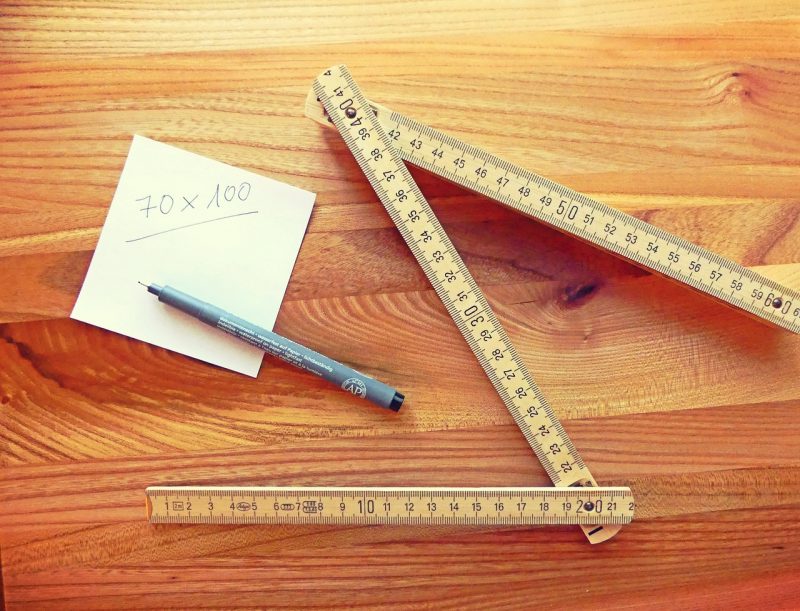Installing kitchen units by yourself is not too difficult, but you have to remember a thing or two and take the time to do it right. Still, if you follow the tips from our professional carpenters in London, it’s worth putting some time into this home improvement project because you can save some money. Moreover, you get to hone your carpentry skills, which is quite satisfying, don’t you think?
Read also: 7 Useful Tips for Building Flat-Pack Furniture
5 Things to Do Before Installing Kitchen Units at Home
Our carpenters advise going through these 5 essential steps to help prepare your home for DIY kitchen cupboards installation.
Clear the Area
Installing big pieces of furniture is quite a big project and requires a lot of free space. Preparing the area for kitchen installation is a lot like prepping a room for painting. You need to be able to work and move around freely without constantly bumping into something. Remove as many items from the kitchen as possible, or at least large pieces like the table and chairs. Don’t forget the small appliances, dishes and cutlery, as they can easily break if they are in your way. This step is a must if you need to uninstall an old set of cupboards, so don’t miss it.
Read also: 5 Easy Steps to Make Your Furniture Sturdy And Prolong Its Life
Plaster & Plumbing & Electrical Work
Now’s your chance to do some improvements and touch-ups in your kitchen! If you want to replace the old tap or add new sockets, spare some time and take care of these repairs before installing the new kitchen. The same applies to plastering the walls. In the long run, it’s easier to plaster before the new units go in, even though some parts of the wall might be covered with the cupboards. Of course, if this is not possible, you can do the plastering and electrical work afterwards, but you would have to take great care not to damage your new kitchen.
Check also: 4 Common Plumbing Problems You Can Fix By Yourself

Take your kitchen’s measurements before installing the new cupboards to make sure everything fits.
Measure the Walls
After you’ve cleared the kitchen of all clutter and made the necessary repairs, it is time to measure the walls. Actually, measure everything. That’s the only way to be sure everything fits well, you have enough space for all the pieces, and there won’t be annoying gaps between the different units. It’s an equally important step, whether you are getting an RTA kitchen or opting for custom-made cupboards and shelves. Choose a starting point and work clockwise – this way, you won’t miss anything out. Also, make sure to measure the room’s height and all the vertical distances – plumbing and gas pipes, as well as sockets.
Check also: Is Summer Best Time For Home Refurbishment?
Check the Floor
Most homes don’t have perfectly levelled floors, and that’s fine. However, although it is not absolutely necessary to have perfectly flat ground, it is good to check it and mark the spots with bumps and dents. This step will help you to adjust the cupboards when installing them later. Of course, if you remodel the whole kitchen and put in new tiles, it is nice to make sure the floor is adequately levelled before installing the units.
Read also: The 5 Most Common Planning for Renovation Mistakes and How to Avoid Them

Prepare all tools for installing your kitchen in advance – you’ll thank us later.
Get Your Tools Ready
Our handyman will never get tired of repeating this – always have ALL of your tools and materials ready before starting any home improvement project. This is the rule of thumb of all professional carpenters, and it makes sense if you think about it. There are few things more irritating than having to stop working on getting the tool you need – whether it’s in the other room or you have to go to the store and buy it. Here is a list of some of the essential things you need for kitchen units installation:
- Level
- Rubber mallet
- Adjustable wrench
- A set of screwdrivers
- Scraper
- Electric drill
- Tape measure
- Cabinet jack
- Woodworking clamps
- Glue
- Screws, studs, toggle bolts for freestanding cabinets*
Check also: 6 Tools for Easy and Fast DIY Furniture Assembly
*RTA kitchens usually come with all the necessary components. However, it is wise to have extra pieces in case something gets bent or is missing. Different cupboards and units may require different parts, so make sure you have everything ready before you start putting everything together.



